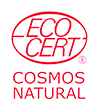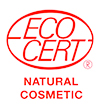COSMOS: A Unified Standard for Five Certifications
Many people mistakenly believe that using organic ingredients automatically makes a certified organic, but that’s not the case. In addition to requiring a certain percentage of natural and organic ingredients according to certification guidelines, the manufacturing process, raw material procurement, and storage must also meet the certification body’s standards. Products must pass annual factory inspections, document reviews, and more to potentially obtain natural/organic certification.
The COSMOS natural/organic certification, which Inna Organic has obtained, was jointly established in 2010 by five leading organic certification organizations from Germany, France, Italy, and the UK. These organizations created an integrated standard for beauty and skincare products to eliminate unnecessary competition among themselves.
These five founding certification organizations are:
- BDIH (German Association of Industries and Trading Firms)
- Cosmebio (French Professional Association for Natural and Organic Cosmetics)
- Ecocert Greenlife SAS (French International Ecological Certification Center)
- ICEA (Italian Institute for Ethical and Environmental Certification)
- Soil Association (UK Soil Association)
Although COSMOS was jointly established by these five organizations, full integration is still in progress. Currently, each certification organization maintains two parallel one based on the COSMOS guideliness and the other using its original certification criteria. Since Inna Organic has chosen ECOCERT as its certifying body, so the remainder of this article will use ECOCERT as an example to explain these certifications.
Understanding COSMOS and ECOCERT Certification Standards
The table below compares the logos for “ECOCERT certifications using COSMOS standards” and “ECOCERT’s own certification standards,” allowing you to instantly distinguish between these seemingly similar logos.
Certifications marked in green have been obtained by Inna Organic
Certification Logo
Certification Name
Key Standards

COSMOS ORGANIC

COSMOS NATURAL

ECOCERT ORGANIC COSMETIC

ECOCERT NATURAL COSMETIC
As you can see from the table above, COSMOS ORGANIC has stricter organic content requirements than ECOCERT ORGANIC. Since COSMOS was created as a premium standard by integrating five major organic certification organizations, it is not only more comprehensive and rigorous than their original standards, but also represents the evolving trend in European organic certification (currently COSMOS is still in the process of integration, and whether each organization’s original certifications will be retained in the future remains uncertain).
This is why we have chosen COSMOS ORGANIC as our standard for quality control.






Leave a comment